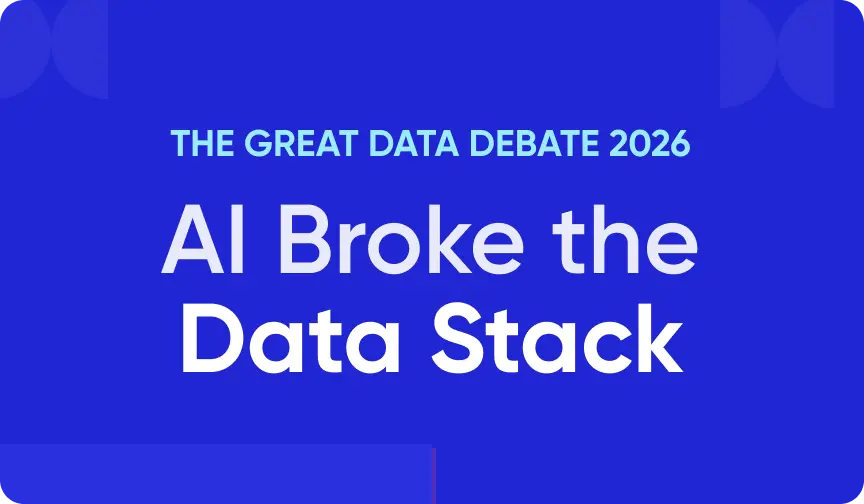How to Implement a Data Discovery Tool With Glue?

Share this article
Using a data discovery tool with AWS Glue allows organizations to efficiently manage and analyze large datasets, leading to informed decisions and innovative solutions.
AWS Glue is a serverless data integration service that prepares and combines data for analytics, while a data discovery tool enables users to search and visualize data across multiple sources.
The integration of a data discovery tool with AWS Glue offers a comprehensive solution for data management, enabling organizations to more effectively discover, process, and analyze their data, while ensuring quality, governance, and cost-effectiveness.
Modern data problems require modern solutions - Try Atlan, the data catalog of choice for forward-looking data teams! 👉 Book your demo today
Table of contents
Permalink to “Table of contents”- Why should you use a data discovery tool with AWS Glue?
- AWS Glue overview
- What is data discovery?
- Steps to implement a data discovery tool with AWS Glue
- Guidelines for effective implementation
- Data discovery for AWS Glue: Related reads
Why should you use a data discovery tool with AWS Glue?
Permalink to “Why should you use a data discovery tool with AWS Glue?”Implementing a data discovery tool offers numerous benefits. Let’s explore some of the advantages.
- Enhances decision-making: Provides quick, data-driven insights for informed decisions.
- Increases accessibility: Makes data easily accessible to non-technical users.
- Fosters innovation: Encourages exploration, leading to innovative ideas and solutions.
- Improves efficiency: Streamlines data analysis, saving time and resources.
By empowering a wider range of employees to analyze data, it fosters a culture of informed decision-making and innovation.
AWS Glue overview
Permalink to “AWS Glue overview”AWS Glue is a serverless data integration service that simplifies the process of data preparation for analytics, machine learning, and application development. It allows users to discover, prepare, move, and integrate data from various sources.
AWS Glue provides a centralized data catalog to manage data across a wide range of sources and enables the creation, running, and monitoring of ETL pipelines.
It combines major data integration capabilities like discovery, modern ETL, and centralized cataloging into one service, making it user-friendly for a diverse range of technical skill sets.
What is data discovery?
Permalink to “What is data discovery?”Data discovery is a trend in business intelligence that empowers anyone in an organization to explore and derive meaning from data. It breaks away from the traditional BI approach where only a select few could access and interpret data.
Data discovery tools are designed to be accessible, intuitive, and visual, enabling users to explore data without needing complex programming skills.
The combination of a data discovery tool with AWS Glue offers several key benefits which include:
- Streamlining data integration and management from numerous sources, supporting robust data discovery processes.
- Enhancing data handling, essential for effective data exploration.
- Empowering organizational capabilities in analytics and decision-making, driving innovation and ensuring a competitive edge in data-centric operations.
In a nutshell, the integration of AWS Glue with data discovery tools empowers organizations with actionable insights and informed strategic decisions.
Steps to implement a data discovery tool for AWS Glue
Permalink to “Steps to implement a data discovery tool for AWS Glue”Implementing a data discovery tool for AWS Glue involves the following strategies:
1. Evaluating tools for data discovery in a Glue environment
Permalink to “1. Evaluating tools for data discovery in a Glue environment”- Compatibility with AWS Glue: Ensure the tool integrates seamlessly with AWS Glue’s data sources and ETL processes.
- Data visualization features: Look for advanced visualization capabilities for intuitive data exploration.
- User accessibility: Choose tools that are user-friendly for a wide range of technical skills.
- Scalability and performance: Assess how well the tool scales with increasing data volumes and complexity.
- Cost-effectiveness: Evaluate the total cost of ownership, including subscription fees and resource utilization.
- Security and governance: Ensure the tool adheres to your organization’s data security and governance policies.
2. Missed aspects in the evaluation
Permalink to “2. Missed aspects in the evaluation”- Long-term support and community strength: Ensure ongoing support and a robust user community for problem-solving and updates.
- Customization and flexibility: Check for customization options to tailor the tool to specific business needs.
3. Making a clear business case
Permalink to “3. Making a clear business case”- ROI analysis: Demonstrate the potential return on investment through improved decision-making and productivity.
- Efficiency gains: Highlight how the tool will streamline data processes and reduce reliance on IT.
- Competitive advantage: Show how data discovery tools can provide a competitive edge through faster, data-driven insights.
Guidelines for effective implementation
Permalink to “Guidelines for effective implementation”Common pitfalls in implementing a data discovery tool for AWS Glue include:
- Underestimating the complexity of integrating diverse data sources, which can lead to data silos.
- Overlooking the importance of data quality and governance in the Glue Data Catalog, resulting in unreliable analytics.
- Failing to scale resources effectively, leading to increased costs and reduced performance.
- Neglecting user training, which limits the effective use of data discovery tools.
Addressing these challenges is key to maximizing the benefits of data discovery tools in an AWS Glue environment.
Data discovery for AWS Glue: Related reads
Permalink to “Data discovery for AWS Glue: Related reads”- AWS Glue Documentation
- AWS Glue components
- ETL Service - Serverless Data Integration - AWS Glue
- What Is Data Discovery: Definition, Purpose, Process, Techniques, and Tools
- How to set up AWS Glue
- AWS Glue Connectivity
- How to crawl AWS Glue
- Data Discovery & Catalog
- How to Implement a Data Discovery Tool With Synapse?
- Data Discovery Tools: 9 Popular Tools You Should Consider in 2024
- How to Improve Data Discovery with Persona-Driven Strategies
Share this article





















